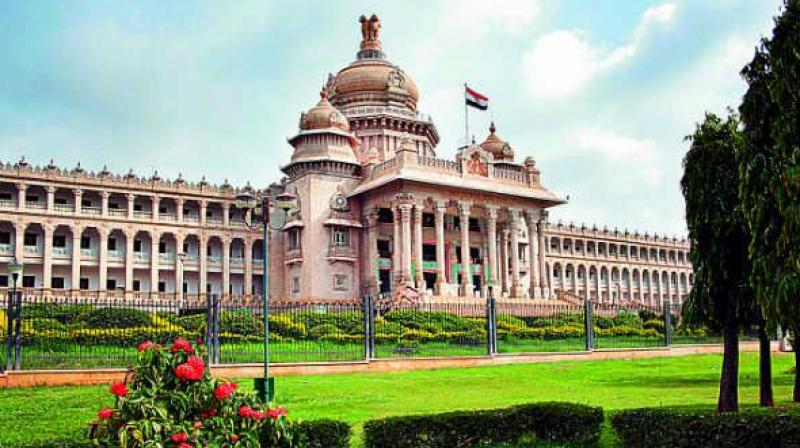Bangalore : High expenditure along with farm loan waiver is likely to reduce fiscal space for the Karnataka Government and would affect the state’s medium to long-term growth prospects, estimated India Ratings and Research (Ind-Ra).
“The waiver of farm loans announced by the government of Karnataka (GoK) in the FY19 budget, in combination with the persistently high level of committed expenditure, will limit the state’s ability to rationalise expenditure and achieve a higher surplus in its revenue account. A higher growth in revenue expenditure than revenue receipts is likely to reduce the fiscal space for the government to augment capex, thus affecting Karnataka’s medium-to-long-term growth prospects. Revenue receipts and expenditure is budgeted to increase 13.9% yoy and 14.2% yoy, respectively, in FY19 (Budget Estimate BE) from 9.6% yoy and 10.4% yoy in FY18 (Revised Estimate: RE)” Ind-Ra said.
Recently, the Karnataka Government (GoK) announced a farm loan waiver of INR340 billion in the FY19 budget. Ind-Ra believes this will be done in a phased manner. The government has allocated INR65 billion towards the issue of clearance certificate by waiving the arrears from the defaulting accounts in the FY19 budget. The GoK’s approach is akin to the staggered payment mechanism adopted by Andhra Pradesh and Telangana, which announced a farm debt waiver of INR430 billion and INR170 billion, respectively, in 2014 and rolled over the farm debt waivers over four years. By a staggered approach, the GoK has minimised the adverse impact of farm loan waiver on the state finances in its FY19 budget. The GoK has announced a hike in value added tax on petrol (30%-32%) and diesel (19%-21%), excise duty on liquor and electricity duty to generate additional resources to accommodate the farm loan waiver.
The state succeeded in eliminating the revenue deficit in FY05, and the revenue account has remained in a surplus position since then. However, the size of the revenue surplus remains inadequate to make a significant contribution toward funding capex. The revenue surplus is budgeted to come in lower at INR1.06 billion in FY19 (FY18(RE): INR3.84 billion, FY17: INR12.93 billion). The revenue surplus/GSDP remained below 0.3% during FY15-FY18RE and is budgeted at a mere 0.01% in FY19.
The budgeted revenue expenditure for FY19 is primarily driven by a sharp increase in salary and pension components. Salaries and pensions are projected to grow 30.7% yoy (FY18RE: 12.9% yoy) and 47.6% yoy (6.8% yoy), respectively, in FY19 due to the implementation of the 6th State Pay Commission recommendations. The share of selected committed expenditure (includes pension, salary and interest payments) is budgeted to increase to 39.5% of revenue expenditure in FY19 (FY18(RE): 34.7%).
Despite the fiscal expansion on account of populist measures and increase in committed expenditures, the GoK has projected a fiscal deficit/GSDP of 2.89% in FY19BE, which is within the 14th Finance Commission’s prescribed limit of 3% of GSDP. The state has relied primarily on borrowings to fund the fiscal deficit due to the small size of its revenue surplus. The GoK has allocated priority to irrigation, roads and bridges in terms of sectors’ share in the total capital outlay in the FY19 budget. Capex/GSDP averaged 2.5% during FY15-FY18RE and is budgeted marginally higher at 2.9% in FY19.
Ind-Ra believes the government needs to augment its own revenue sources and contain unproductive expenditures to be able to channel more funds toward capex in core infrastructure sectors such as education, health, sanitation and urban development. The risk of a significant deviation from the budgeted capex to meet fiscal deficit/GSDP target remains a possibility in the event the state underachieves budgeted revenue receipts and expenditure targets.

